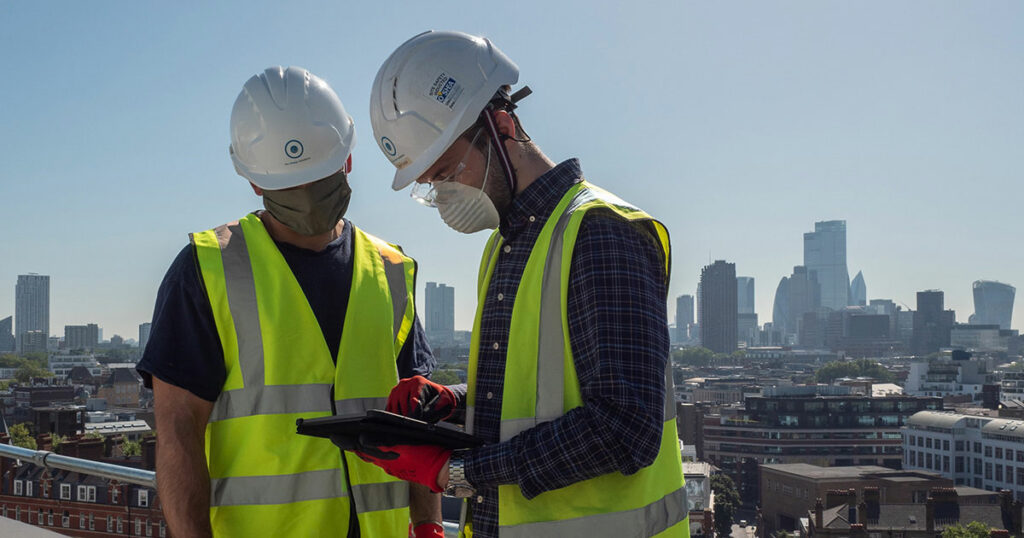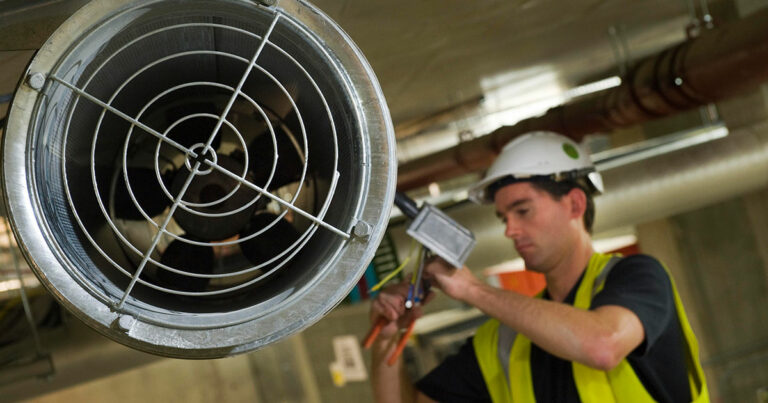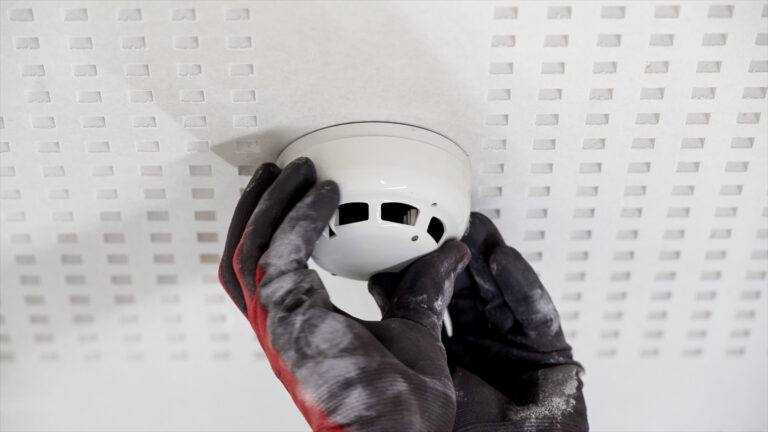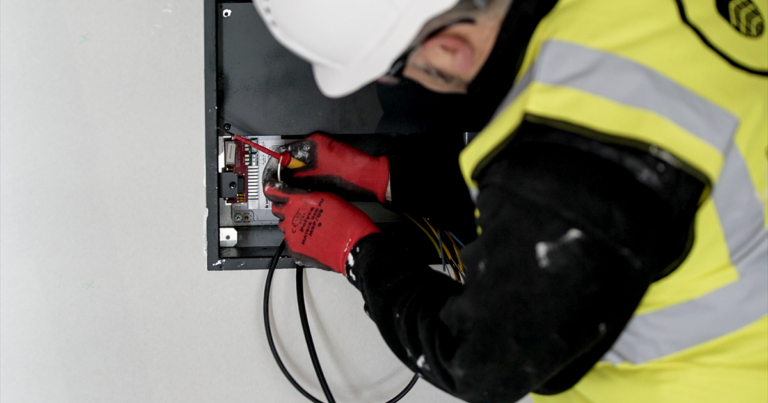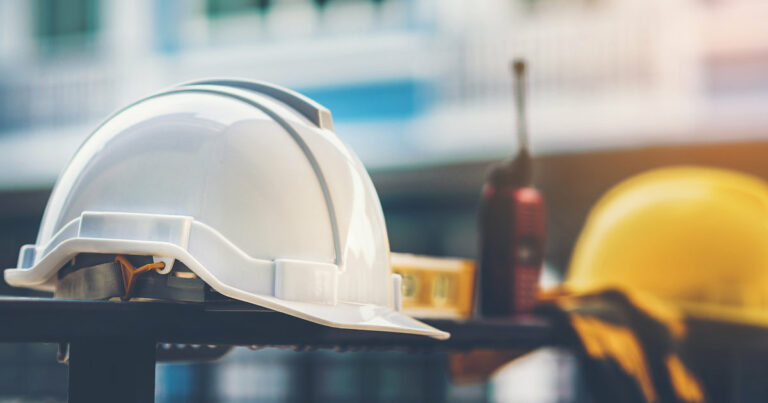Smoke ventilation systems are critical components in fire safety, providing a controlled means to extract smoke and heat from buildings during emergencies. Their ability to maintain clear evacuation routes and reduce smoke damage hinges on their condition; hence, regular maintenance is not just best practice but a legal obligation.
This article outlines the legally required maintenance frequencies for smoke ventilation systems in the UK, supported by relevant standards and guidance. We also explore how FDS Maintenance ensures your systems are serviced at the right intervals to stay compliant and fully functional.
Why Maintenance Frequency Matters
When fire breaks out, smoke ventilation systems are expected to activate without delay.
These systems must operate flawlessly to:
- Preserve visibility in escape routes
- Allow safe firefighter access
- Prevent smoke migration to unaffected areas
Even small delays or failures can have life-threatening consequences. Maintenance frequency ensures each component—whether it’s a smoke vent, fan, or control panel—is ready to function instantly.
Legal Requirements: UK Fire Safety Regulations
Under the Regulatory Reform (Fire Safety) Order 2005, it is a legal requirement that all life safety systems, including smoke ventilation, are:
- Maintained in efficient working order
- Subject to regular testing and inspection
Authorities having jurisdiction (AHJ), such as local fire services, routinely ask for maintenance records to verify compliance. Missing documentation or servicing gaps may result in enforcement action or invalidate insurance.
Smoke Control Association Guidelines for Maintaining Smoke Control Equipment
In line with BS 7346-8, BS 9999, and BS 9991, the Smoke Control Association advises that maintenance schedules be tailored according to specific building types and system designs. However, general frequency recommendations include:
Weekly Checks (Competent Person):
- Actuate the system per the provider’s recommendations.
- Verify all smoke control status panels and firefighters’ switches for fault indications.
- Ensure all smoke control components (dampers, natural ventilators, curtains, etc.) operate correctly, noting any unusual noises or issues.
- Maintain detailed records of these tests in the system logbook.
Monthly Checks (Competent Person):
- Perform a thorough inspection of Automatic Opening Vents (AOVs) and control panels for debris, wear, corrosion, tampering, or vermin.
- Ensure door hold-open devices operate correctly.
- Simulate the failure of the primary power supply and run the system on the secondary supply.
- Log comprehensive records of these inspections.
Quarterly (3-monthly) Checks (Competent Person):
- Conduct independent testing of each zone and all parts of the smoke control system.
- Include testing of all fire detection inputs and control interfaces.
- Maintain thorough records of the tests.
Biannual (6-monthly) Checks (Competent Maintainer):
- Review logbook entries for regular checks and observations.
- Verify all cause-and-effect functions are performing per the original design.
- Check primary and secondary power supplies, battery conditions, and replace as required.
- Perform functional integrity tests on system components and log results comprehensively.
Annual Checks (Certified SDI Organisation):
- Perform comprehensive commissioning checks.
- Verify full functionality and compliance against original specifications.
- Inspect shaft doors, dampers, and rooftop vents, and verify environmental functionality and seals.
- Ensure smoke control ducts and shafts are cleaned annually, with certificates issued to validate compliance.
- Issue detailed maintenance certificates clearly stating test outcomes (pass, pass with advisories, or fail)
Some high-risk sites (e.g. hospitals, underground car parks) may require more frequent servicing, especially if systems operate in harsh or corrosive environments.
What Can Go Wrong Without Regular Maintenance?
- Vent Jam or Seizure: Dust, corrosion or mechanical failure may prevent vents from opening
- Control System Errors: Software or firmware faults can disrupt activation sequences
- Battery Failure: Backup power is essential, but often neglected
- Sensor Disconnection: Faulty sensors can fail to detect smoke or overheat
- Compliance Breach: Missed inspections mean failed audits and legal exposure
Smoke Vent Maintenance for Different Systems
Natural Ventilation
- Simpler systems (e.g. AOVs in stairwells) usually require biannual inspections.
- Still need actuator, hinge, and sensor testing
Mechanical Ventilation
- More complex systems using fans and ductwork
- Often require quarterly checks and annual system performance testing
Hybrid Systems
- Combination of mechanical and natural elements
- Maintenance must cover both operational modes and their interaction
How FDS Maintenance Helps You Stay on Schedule
FDS Maintenance offers tailored service contracts that align with your building type, occupancy level, and system complexity.
Here’s how they ensure compliance:
- Digital Maintenance Schedule
- Automated reminders and logs keep your servicing on track. No risk of missed inspections.
- Qualified Engineers
- FDS engineers, trained and certified in BS EN 12101 and RRO compliance, conduct tests, diagnostics, and repairs during each visit.
- Comprehensive Reporting
Every service visit includes a detailed report with:
- What was tested
- Any faults found
- Corrective actions taken
- Next service due date
- 24/7 Support
FDS clients receive emergency response cover for critical faults or post-alarm incidents.
Internal Responsibilities vs Professional Service
While some inspections can be done in-house (e.g. weekly panel checks), regulatory compliance requires evidence of qualified technician servicing. FDS can support in-house teams with training and service logs.
In Summary
Knowing your smoke vent maintenance frequency is about more than ticking boxes—it’s about ensuring that your building remains safe, your people are protected, and your legal responsibilities are fulfilled.
FDS Maintenance helps you develop and maintain a service schedule tailored to your building’s needs, backed by experienced engineers, professional reports, and 24/7 support.
Book your smoke vent maintenance visit or schedule a compliance review today.


